
Cassiopeia
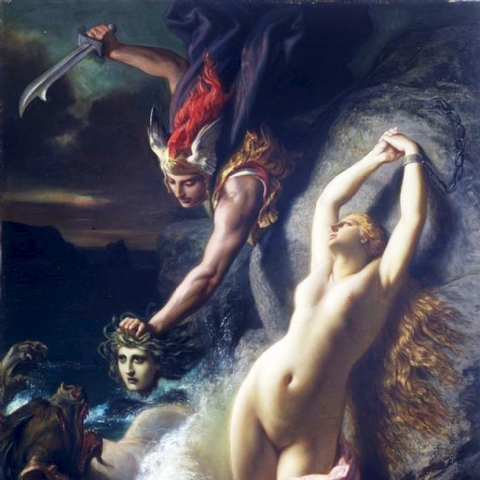
Cassiopeia (Κασσιόπεια) or Cassiepeia (Κασσιέπεια), a figure in Greek mythology, was queen of Aethiopia and wife of king Cepheus.
She was arrogant and vain, characteristics that led to her downfall. Her name in Greek is Κασσιόπη, Kassiope; other variants are Κασσιόπεια, Kassiopeia and Κασσιέπεια, Kassiepeia.
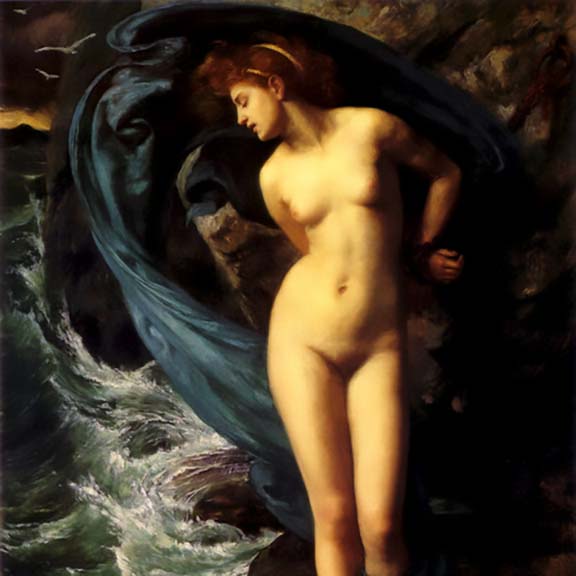
Family
Cassiopeia was the Queen of Aethiopia, the land that stretched across Africa, south of Libya' Cassiopeia being queen as she was married to Cepheus, a son of Belus.
The parentage of Cassiopeia is more difficult to differentiate, though most often, but still rarely, Cassiopeia is considered to be a daughter of the Oceanid Zeuxo, possibly by Coronus.
Nonnus, in the Dionysiaca, called her a nymph, though this does not equate with her being called a mortal queen.
Certainly though Cassiopeia had the beauty of a nymph, most likely inherited from Zeuxo, and these genes were passed on to Cassiopeia and Cepheus' daughter Andromeda.
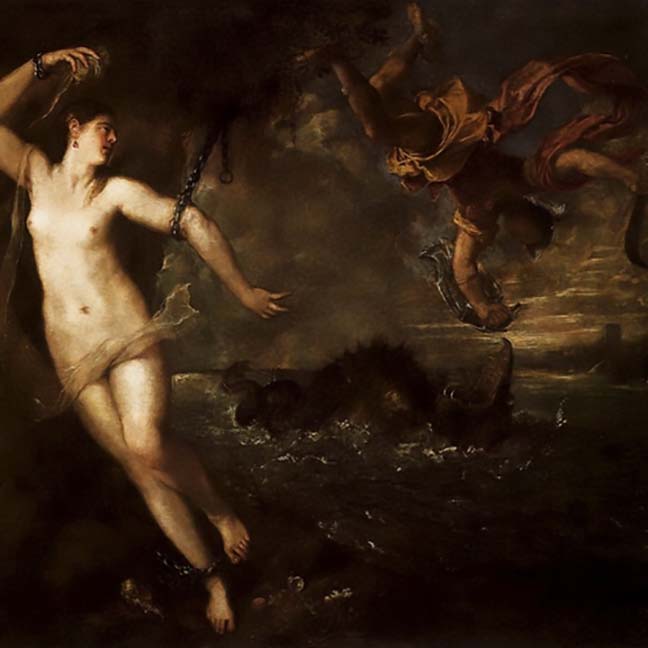
The Myth
Cassiopeia boasted that she and her daughter Andromeda were more beautiful than all the Nereids, the nymph-daughters of the sea god Nereus. This brought the wrath of Poseidon, ruling god of the sea, upon the kingdom of Ethiopia.
Accounts differ as to whether Poseidon decided to flood the whole country or direct the sea monster Cetus to destroy it. In either case, trying to save their kingdom, Cepheus and Cassiopeia consulted a wise oracle, who told them that the only way to appease the sea gods was to sacrifice their daughter.
Accordingly, Andromeda was chained to a rock at the sea's edge and left to be killed by the sea monster. Perseus arrives to kill Cetus, saves Andromeda and marries her.
Poseidon thought Cassiopeia should not escape punishment, so he placed her in the heavens chained to a throne in a position that referenced Andromeda's ordeal. The constellation resembles the chair that originally represented an instrument of torture.
Cassiopeia is not always represented tied to the chair in torment, in some later drawings she holds a mirror, symbol of her vanity, while in others she holds a palm frond.
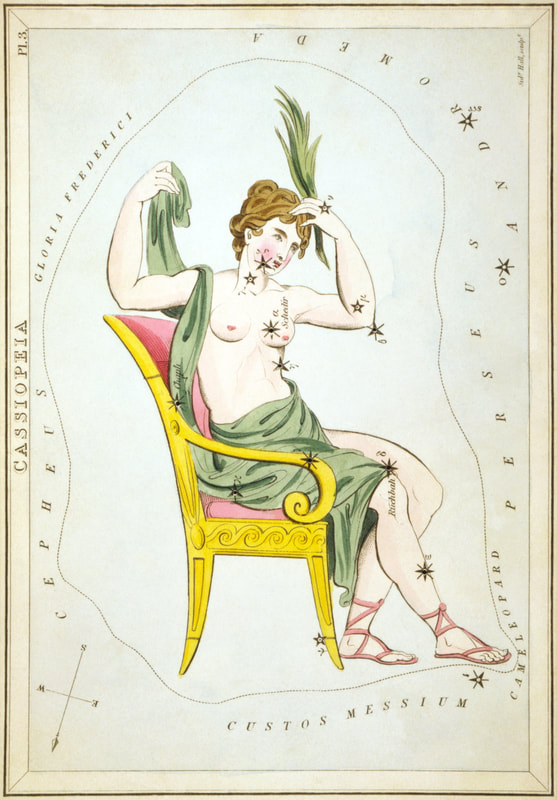
Constellation
Cassiopeia is a constellation in the northern sky, named after the vain queen Cassiopeia in Greek mythology, who boasted about her unrivaled beauty. Cassiopeia was one of the 48 constellations listed by the 2nd-century Greek astronomer Ptolemy, and it remains one of the 88 modern constellations today. It is easily recognizable due to its distinctive 'W' shape, formed by five bright stars.
The constellation Cassiopeia, near to the pole star, can be seen from latitudes north of 35°N during the whole year. The constellation is also visible in countries north of the Tropic of Capricorn, in late spring.
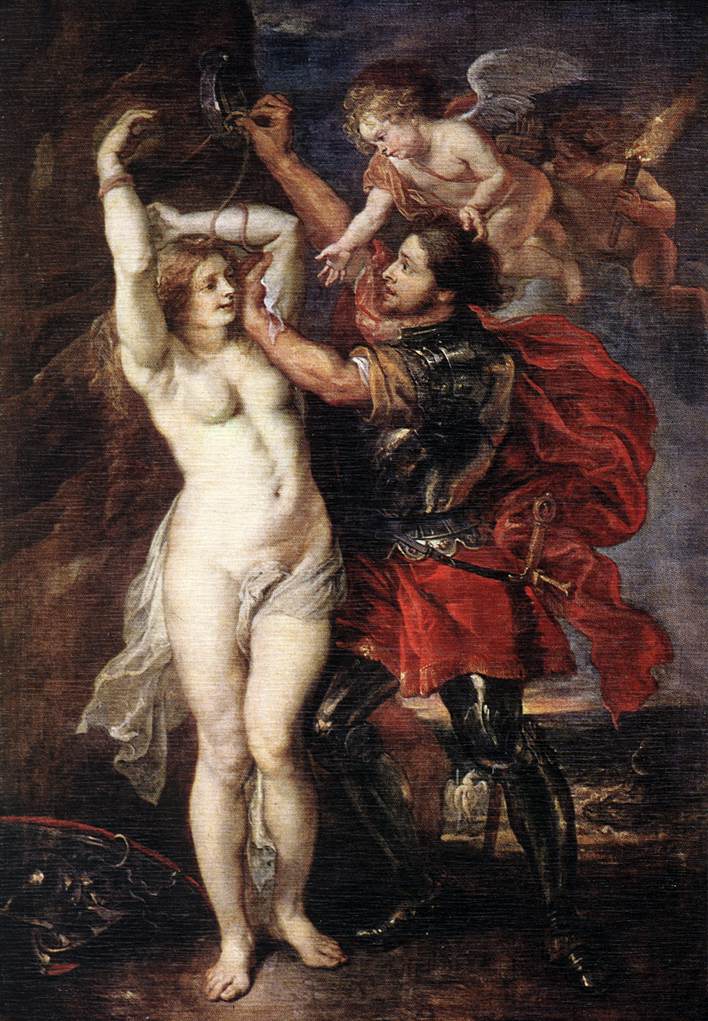
Sources
Nonnus, Dionysiaca 43.117 ff.
Stephanus of Byzantium, Ethnica s.v. Ἰόπη
Pseudo-Apollodorus, Bibliotheca 2.4.3
Hyginus, Fabulae 64
Wright, Anne. "Constellations - Cassiopeia".
Hyginus, Astronomica 2.10.
Aratus, Phaenomena 187
"Wikipedia"
Our Mobile Application
Check out Our Mobile Application "Ancient Greece Reloaded"


